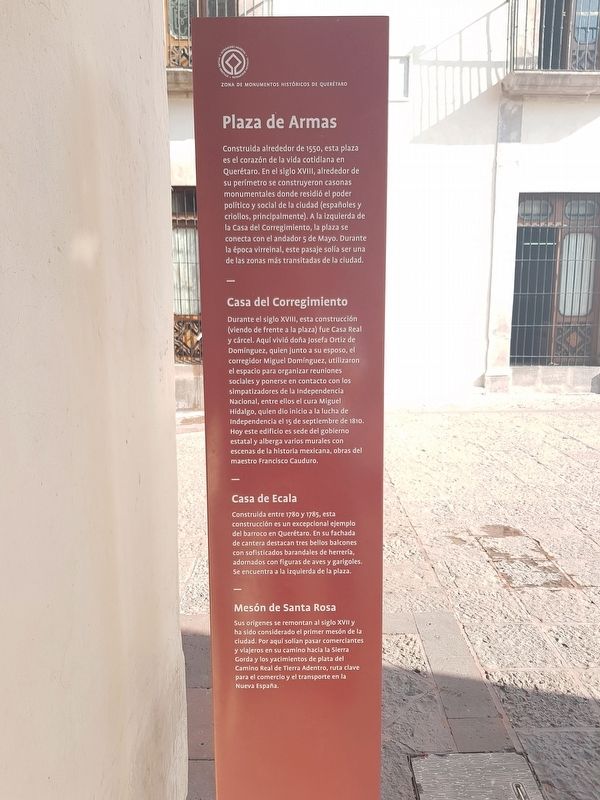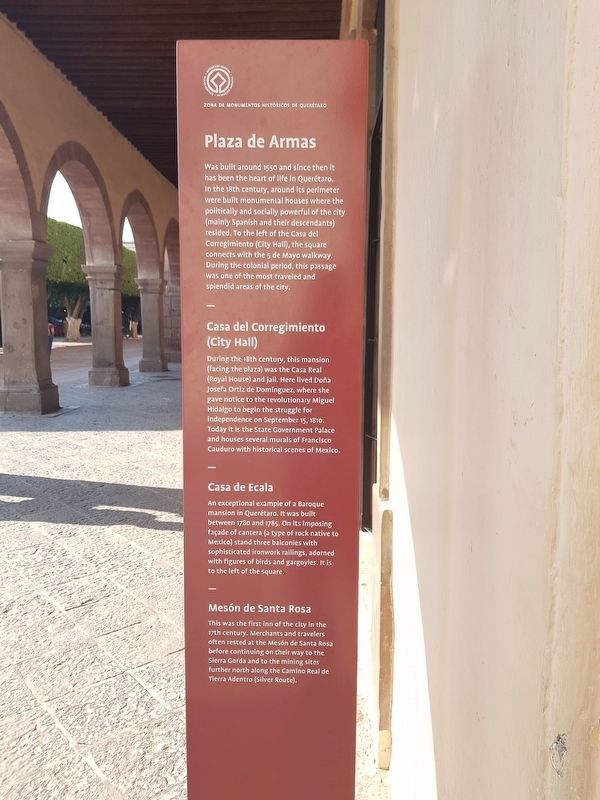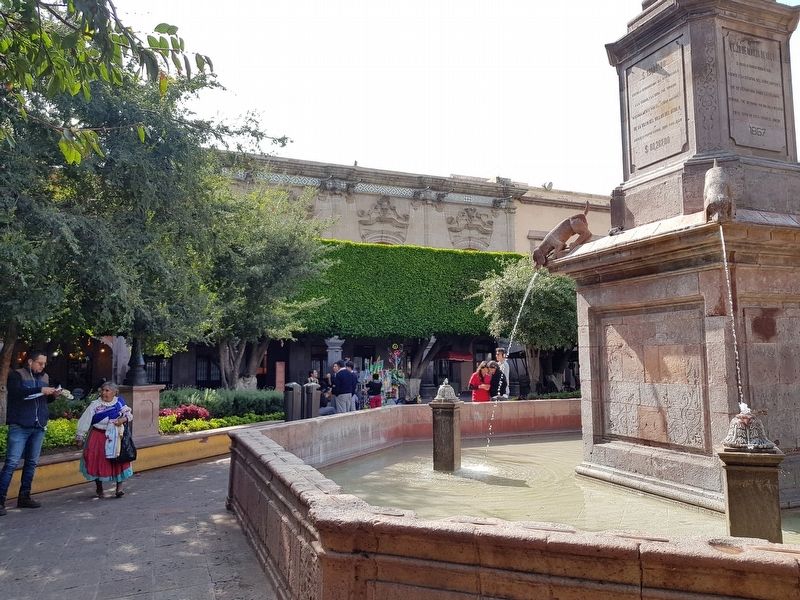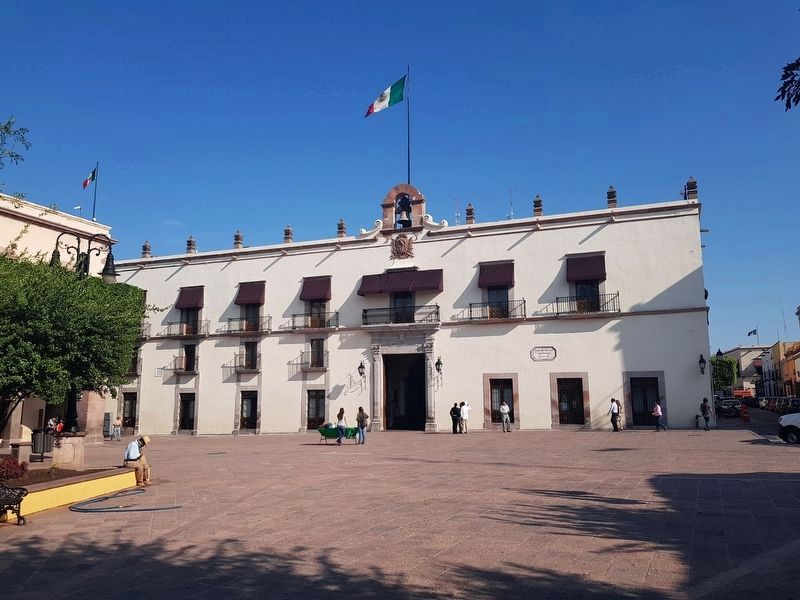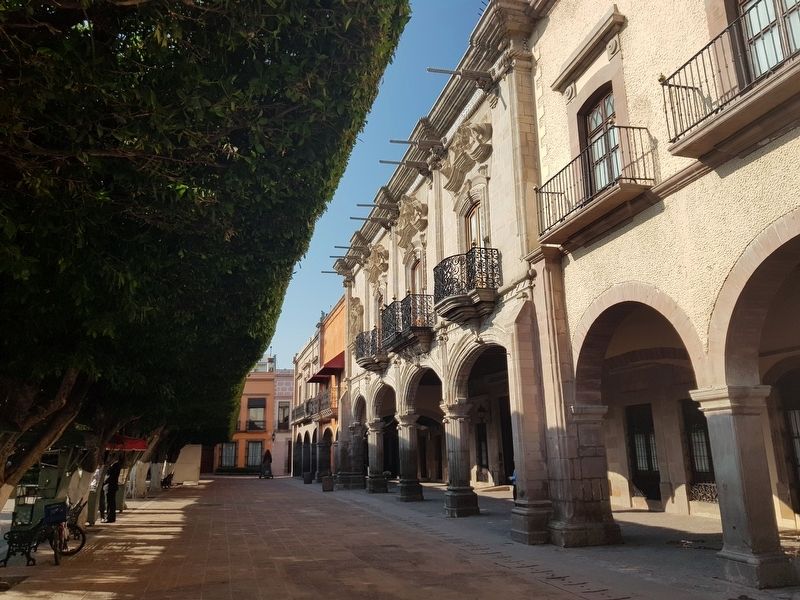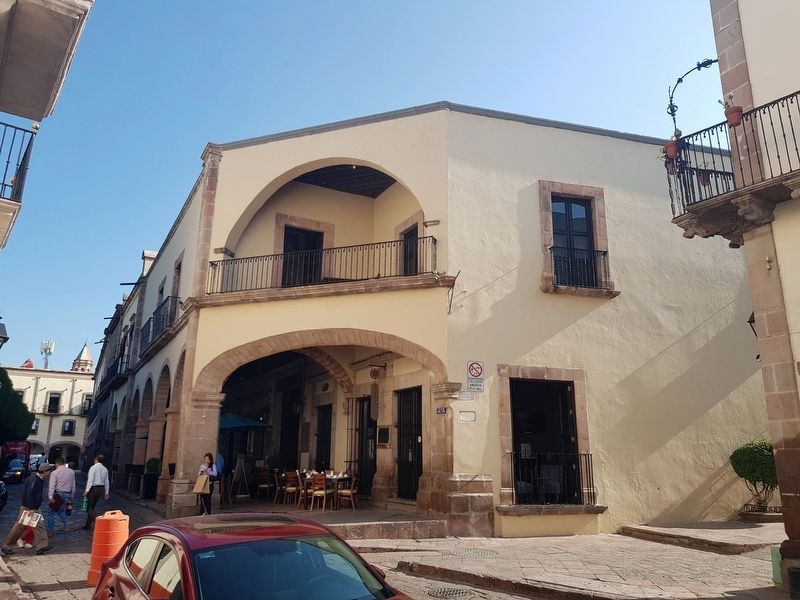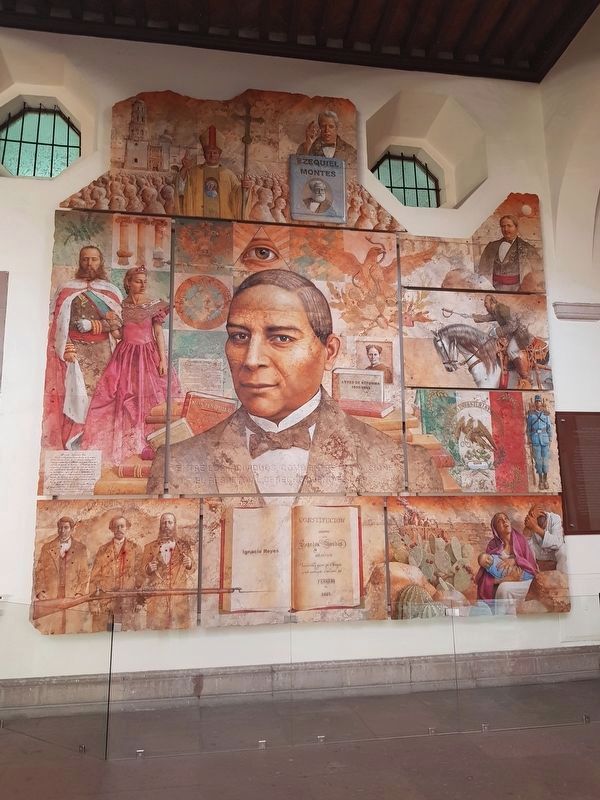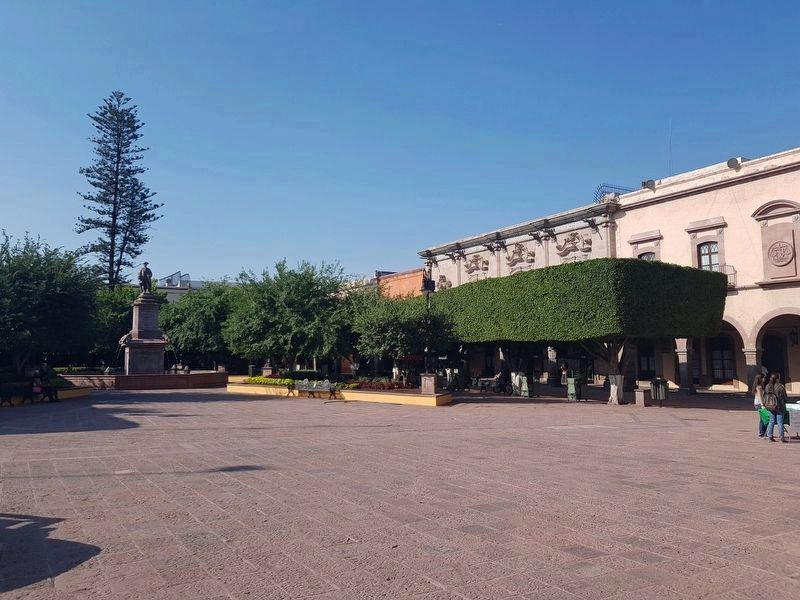Santiago de Querétaro in Querétaro, Mexico — The Central Highlands (North America)
Plaza de Armas
Construida alrededor de 1550, esta plaza es el corazón de la vida cotidiana en Querétaro. En el siglo XVIII, alrededor de su perímetro se construyeron casonas monumentales donde residió el poder político y social de la ciudad (españoles y criollos, principalmente). A la izquierda de la Casa del Corregimiento, la plaza se conecta con el andador 5 de Mayo. Durante la época virreinal, este pasaje solía ser una de las zonas más transitadas de la ciudad.
Casa del Corregimiento
Durante el siglo XVIII, esta construcción (viendo de frente a la plaza) fue Casa Real y cárcel. Aquí vivió doña Josefa Ortiz de Domínguez, quien junto a su esposo, el corregidor Miguel Domínguez, utilizaron el espacio para organizar reuniones sociales y ponerse en contacto con los simpatizadores de la Independencia Nacional, entre ellos el cura Miguel Hidalgo, quien dio inicio a la lucha de Independencia el 15 de septiembre de 1810. Hoy este edificio es sede del gobierno estatal y alberga varios murales con escenas de la historia mexicana, obras del maestro Francisco Cauduro.
Casa de Ecala
Construida entre 1780 y 1785, esta construcción es un excepcional ejemplo del barroco en Querétaro. En su fachada de cantera destacan tres bellos balcones con sofisticados barandales de herrería adornados con figuras de aves y garigoles. Se encuentra a la izquierda de la plaza.
Mesón de Santa Rosa
Sus orígenes se remontan al siglo XVII y ha sido considerado el primer mesón de la ciudad. Por aquí solían pasar comerciantes y viajeros en su camino hacia la Sierra Gorda y los yacimientos de plata del Camino Real de Tierra Adentro, ruta clave para el comercio y el transporte en la Nueva España.
Plaza de Armas
Was built around 1550 and since then it has been the heart of life in Querétaro. In the 18th century, around its perimeter were built monumental houses where the politically and socially powerful of the city (mainly Spanish and their descendants) resided. To the left of the Casa del Corregimiento (City Hall), the square connects with the 5 de Mayo walkway. During the colonial period, this passage was one of the most traveled and splendid areas of the city.
Casa del Corregimiento
(City Hall)
During the 18th century, this mansion (facing the plaza) was the Casa Real (Royal House) and jail. Here lived Doña Josefa Ortiz de Domínguez, where she gave notice to the revolutionary Miguel Hidalgo to begin the struggle for independence on September 15, 1810. Today it is the State Government Palace and houses several murals of Francisco Cauduro with historical scenes of Mexico.
Casa de Ecala
An exceptional example of a Baroque mansion in Querétaro. It was built between 1780 and 1785. On its imposing façade of cantera (a type of rock native to Mexico) stand three balconies with sophisticated ironwork railings, adorned with figures of birds and gargoyles. It is to the left of the square.
Mesón de Santa Rosa
This was the first inn of the city in the 17th century. Merchants and travelers often rested at the Mesón de Santa Rosa before continuing on their way to the Sierra Gorda and to the mining sites further north along the Camino Real de Tierra Adentro (Silver Route).
Erected 2018 by Municipalidad de Querétaro.
Topics. This historical marker is listed in these topic lists: Architecture • Colonial Era • Industry & Commerce • Parks & Recreational Areas. A significant historical date for this entry is September 15, 1810.
Location. 20° 35.576′ N, 100° 23.388′ W. Marker is in Santiago de Querétaro, Querétaro. Marker is on Andador Cinco de Mayo just west of Calle Pasteur, on the left when traveling west. The area of the Plaza de Armas is pedestrian-only, so
the marker can only be seen by walking to it. Touch for map. Marker is in this post office area: Santiago de Querétaro QUE 76000, Mexico. Touch for directions.
Other nearby markers. At least 8 other markers are within walking distance of this marker. Juan Antonio de Urrutia y Arana (a few steps from this marker); Ignacio Pérez (within shouting distance of this marker); Francisco León de la Barra (within shouting distance of this marker); Portal of Samaniego (within shouting distance of this marker); Licenciado Lorenzo de la Parra (about 120 meters away, measured in a direct line); The House of the Lady of Zacatecas (about 150 meters away); The Flor Baja Fountain (about 150 meters away); Venustiano Carranza Garza (about 150 meters away). Touch for a list and map of all markers in Santiago de Querétaro.
Regarding Plaza de Armas. The marker also mentions that the area is part of the Zone of Historical Monuments of Querétaro (Zona de Monumentos Históricos de Querétaro) as part of its designation as a UNESCO World Heritage Site.
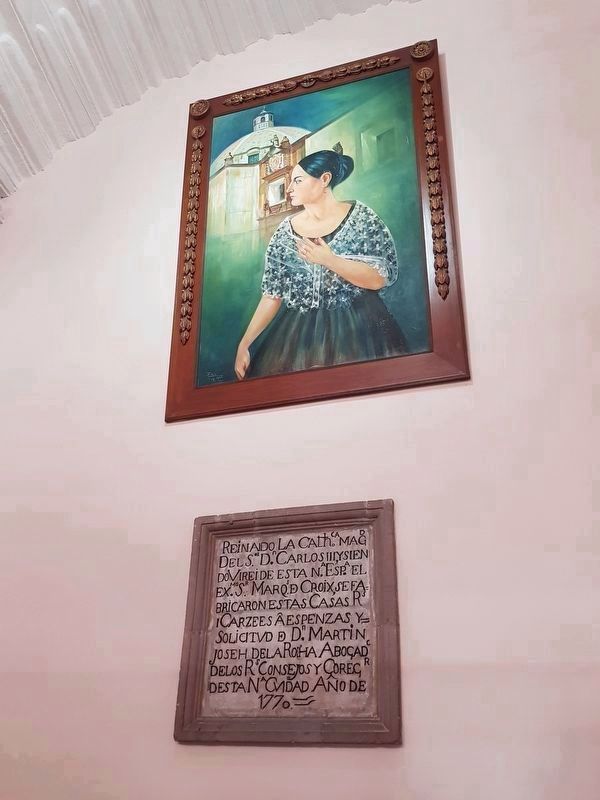
Photographed By J. Makali Bruton, February 22, 2019
5. An inscription inside the Casa del Corregimiento in the Plaza de Armas
This inscription, below a portrait of Josefa de Ortiz Domínguez, is on the stairway to the second floor. It reads:
Reinaido la Cathca. Magd del Sex. Dn. Carlos III, y siendo Virei de esta Na. Espa. El Exmo. Sr. Marqus. De Croix, se fabricaron estas Casas Rs i Carzees a espenzas y solicitud de Dn. Martin Joseh de la Rocha Abogado de los Rs Consejos y Coregr desta Na Ciudad Año de 1770.
English translation:
During the reign of his Catholic Majesty Carlos III, and under the Viceroy of this New Spain the Most Excellent Marquis de Croix, these Royal Houses were built through the expenses and at the request of Joseph de la Rocha, lawyer for the Royal Councils and Coregent of this city, in the year 1770.
During the reign of his Catholic Majesty Carlos III, and under the Viceroy of this New Spain the Most Excellent Marquis de Croix, these Royal Houses were built through the expenses and at the request of Joseph de la Rocha, lawyer for the Royal Councils and Coregent of this city, in the year 1770.
Credits. This page was last revised on March 24, 2019. It was originally submitted on June 10, 2018, by J. Makali Bruton of Accra, Ghana. This page has been viewed 360 times since then and 53 times this year. Photos: 1, 2, 3, 4. submitted on June 10, 2018, by J. Makali Bruton of Accra, Ghana. 5. submitted on March 24, 2019, by J. Makali Bruton of Accra, Ghana. 6, 7, 8, 9. submitted on June 10, 2018, by J. Makali Bruton of Accra, Ghana.
